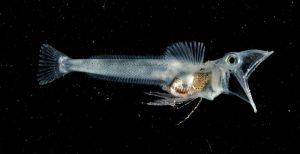Mooers and Greenberg in Nature:
 The tropics are, like many cities, hot, busy and crowded. It was previously thought1 that these conditions in the tropics generate a hotbed for the formation of new species (speciation). Species diversity is remarkably high in the tropics and declines toward the poles. However, newly developed tools to measure speciation rates, coupled with ever-growing global data sets, have enabled the surprising finding that terrestrial speciation rates for the past few million years are similar across different latitudes2 or increase outside the tropics3. Writing in Nature, Rabosky et al.4 document a speciation rate for marine fishes at high latitudes that is twice the speciation rate in tropical seas. This high speciation rate in cold, species-poor waters poses an interesting conundrum for evolutionary biologists and ecologists.
The tropics are, like many cities, hot, busy and crowded. It was previously thought1 that these conditions in the tropics generate a hotbed for the formation of new species (speciation). Species diversity is remarkably high in the tropics and declines toward the poles. However, newly developed tools to measure speciation rates, coupled with ever-growing global data sets, have enabled the surprising finding that terrestrial speciation rates for the past few million years are similar across different latitudes2 or increase outside the tropics3. Writing in Nature, Rabosky et al.4 document a speciation rate for marine fishes at high latitudes that is twice the speciation rate in tropical seas. This high speciation rate in cold, species-poor waters poses an interesting conundrum for evolutionary biologists and ecologists.
There are two potential drivers of high speciation rates in the tropics. First, the elevated temperatures in the region both speed up metabolism, increasing the number of mutations, and decrease generation times. This is a potentially powerful combination, producing more of the variation necessary for evolution and the possibility of faster evolution. A second possible driver is ecological opportunity. The energy-rich tropics offer abundant resources that can support many different niches. And the tropics are so rich in species that the interactions of members of a single species with its competitors, predators and parasites might differ from place to place, leading to different adaptations and eventual divergence into new niches1. Although this narrative makes for a compelling theory, Rabosky and colleagues’ discovery suggests a different story, at least for marine fishes.
More here.
